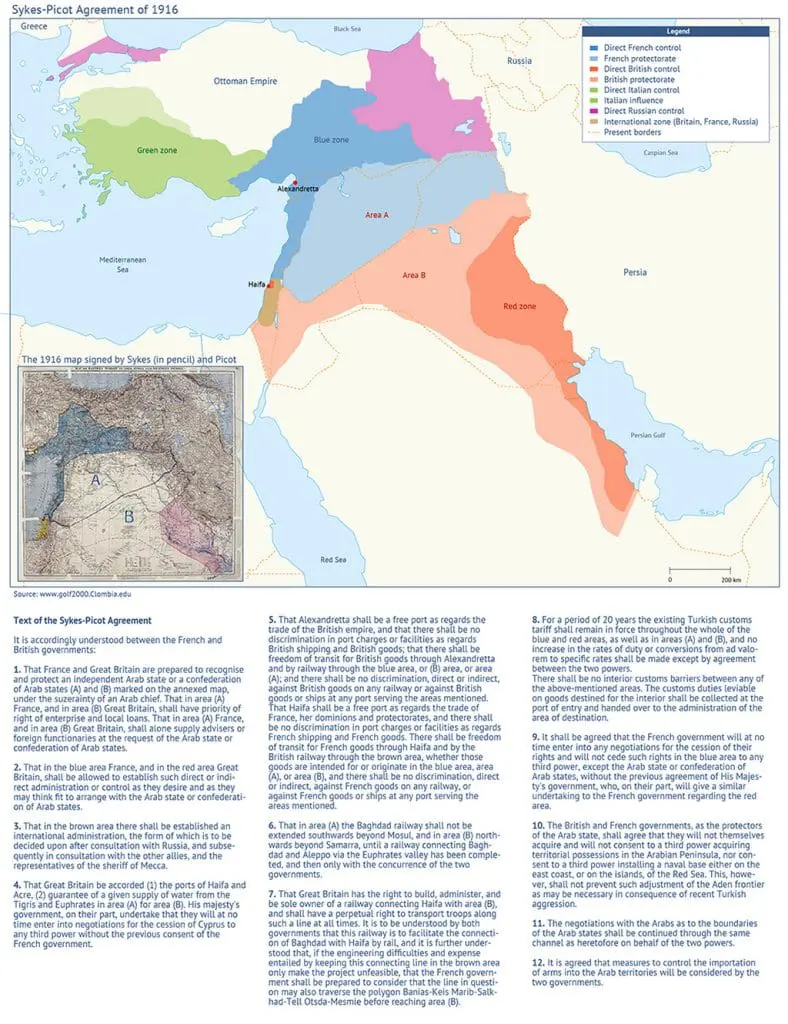Historical context of the Balfour Declaration and its impact on the region. From the Husayn-McMahon Correspondence to the Sykes-Picot Agreement and the Balfour Declaration, how these events shaped the future of Palestine and the Middle East. Jerusalem's history under British mandate unfolds, revealing the complex dynamics of a pivotal era.

Introduction
During World War I, the Ottoman Turkish Empire sided with Germany and the Austro-Hungarian Empire, thus suffering defeat. Its most important adversaries – Great Britain and France – hence seized the opportunity to occupy large parts of the territory belonging to the Ottoman Turkish Empire, including Bilad al-Sham.
Husayn-McMahon Correspondence
In their struggle against the Ottoman Turkish rulers, the British and the French sought support from the Arabs, in the person of the Sharif of Mecca (Protector of the holy cities of Mecca and Medina), Sayyid Husayn ibn Ali. On account of his position and as a descendant of the Prophet Muhammad, he enjoyed great authority among Muslims. Husayn was willing to offer the required support.
This was a major step, as it meant he was opposing the authority of the sultan – who was, after all, the Prophet Muhammad’s successor (in the previous years he had already begun to distance himself from the sultan). In exchange for their support, the Arabs were promised independence by the British (set down in writing in the so-called Husayn-McMahon Correspondence, 1915-1916).
Sykes-Picot Agreement
After the war, however, Great Britain and France did not fulfil their obligations towards the Arabs. Instead, London and Paris divided the conquered Ottoman Turkish territory between them in a British and a French mandate territory (a 20th century word for a colony), on the basis of a secret agreement (the Sykes-Picot Agreement, 1916).
This happened with the consent of the recently established League of Nations, the predecessor of the United Nations. In 1920, the British Mandate of Palestine thus came into existence.

Balfour Declaration
On 2 November 1917, British Foreign Secretary Arthur Balfour wrote a letter to Walter Rothschild, a leading figure in the British Jewish community, expressing the government’s support for a Jewish homeland in Palestine. Comprising a single paragraph, the text became known as the Balfour Declaration.
Palestine was, at the time, a remote province in the disintegrating Ottoman Empire, with which Britain had been at war since 1914. Yet despite having no claim to the territory, the British made the declaration without consulting its 650,00 inhabitants, made up of about 92 per cent Arabs (Muslim and Christian) and 8 per cent Jews.
History of the Palestinian-Israeli Conflict
This article is part of our coverage of the history of the Palestinian-Israeli Conflict.
Fanack’s historical record meticulously chronicles the Palestinian-Israeli Conflict in a chronological sequence, encompassing its origins, crises, wars, peace negotiations, and beyond. It is our most exhaustive historical archive.



